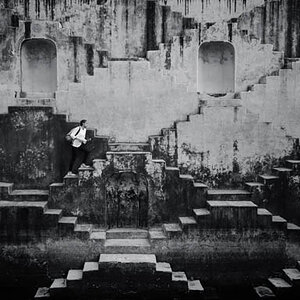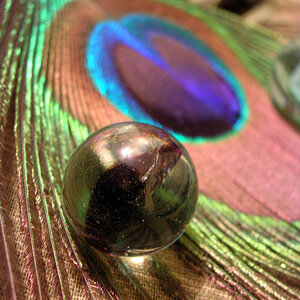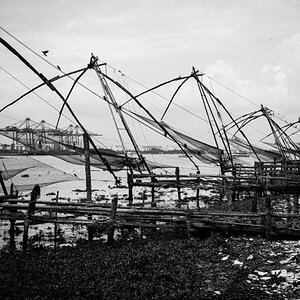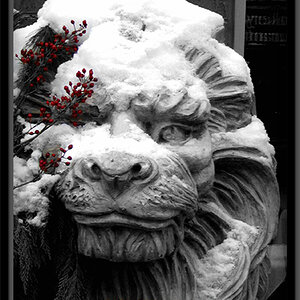Navigation
Install the app
How to install the app on iOS
Follow along with the video below to see how to install our site as a web app on your home screen.

Note: This feature currently requires accessing the site using the built-in Safari browser.
More options
You are using an out of date browser. It may not display this or other websites correctly.
You should upgrade or use an alternative browser.
You should upgrade or use an alternative browser.
Is emotion important in images?
- Thread starter pgriz
- Start date
pgriz
Been spending a lot of time on here!
- Joined
- Jul 30, 2010
- Messages
- 6,734
- Reaction score
- 3,221
- Location
- Canada
- Can others edit my Photos
- Photos OK to edit
I've thought about this since you originally posted it and this is what I have come up with
When there isn't a person, critter etc... In an image to illicit a response in the viewer I strive to get the viewer's attention and make them stop and look. One person may stop and look because the picture hits them on an emotional level drawing from their own personal experience but the key is to capture the attention of the person who does not have a personal trigger in the image.
I feel like if the image captures and keeps the person not emotionally poked by the image it is successful.
Let's get personal. I see your branches picture (a few threads ago) and I go "Wow!" I stop and look. I see the movement and the solidity all at the same time. I feel the "treeness" of those trees. I feel... and therefore, the image works for me.
Bitter has posted some really neat abstracts. I see and my mind tries to figure out what I'm seeing. At some point, I stop trying to impose an order on the image and let it reveal itself to me in terms of its shapes and colours and light. I feel its order, or its disorder, or its balance... But the important point is that I feel...
Manaheim has posted some neat stair shots. Unusual. Arresting. Well balanced. The eye delights in the patterns and goes exploring, like a little child in a visual wonderland of surprises. I feel...
MLeek showed us recently some of her football images. You can see the intensity in the players's faces, their poses, their motion. I feel the strain, I feel the effort... I feel...
pgriz
Been spending a lot of time on here!
- Joined
- Jul 30, 2010
- Messages
- 6,734
- Reaction score
- 3,221
- Location
- Canada
- Can others edit my Photos
- Photos OK to edit
The artist doesn't create emotions, the art experience does. It's not up to us to elicit responses, our job as artists is to create experiences, not emotions.
Fine, but let's not get pedantic. Let's call the image the experience. And if we have figured out how people react and what we look at, we can be pretty good at eliciting that emotion to that experience.
unpopular
Been spending a lot of time on here!
Then maybe I should rephrase - why should I care about what the artist wants me to feel?
It just seems so selfish to me: what I think/feel is so important, my artwork is only going to be successful if you think/feel the way I want you to.
Art makes you feel for the same reasons anything else does.
It just seems so selfish to me: what I think/feel is so important, my artwork is only going to be successful if you think/feel the way I want you to.
Art makes you feel for the same reasons anything else does.
Last edited:
pgriz
Been spending a lot of time on here!
- Joined
- Jul 30, 2010
- Messages
- 6,734
- Reaction score
- 3,221
- Location
- Canada
- Can others edit my Photos
- Photos OK to edit
Then maybe I should rephrase - why should I care about what the artist wants me to feel?
Frankly, you shouldn't. But a good artist should be able to know how to influence a viewer to feel something. It's that insight into how perception works and what gets people's attention.
If I'm making an image strictly for my own enjoyment, I may end up taking a snapshot which evokes for me the specific circumstances (and people and places) that I was experiencing. The image is therefore a placeholder, a memory tickler, for evoking a memory.
That same image shown to someone else who was not a participant, will probably not evoke the same feelings. Which is fine. I don't expect it to.
However, IF I wanted to convey the feeling I had to someone who was not there, and all I had available to me to transmit that feeling was an image that I could create, then I'd have to be much more focused on the viewer and be aware of both my feeling and how I could arouse the same feeling in the other person. That's a whole different level of ability, which I don't claim to have, but would like to have.
unpopular
Been spending a lot of time on here!
I think more interesting works of art offer ambiguity, conflict and lend themselves to interpretation, this permits them to be a part of our world view, rather than a reflection of the artists'.
pgriz
Been spending a lot of time on here!
- Joined
- Jul 30, 2010
- Messages
- 6,734
- Reaction score
- 3,221
- Location
- Canada
- Can others edit my Photos
- Photos OK to edit
I think more interesting works of art offer ambiguity, conflict and lend themselves to interpretation, this permits them to be a part of our world view, rather than a reflection of the artists'.
Sure! and an image that offers ambiguity and possible multiple interpretations is to my mind a wonderful and masterful construct, as it invites the viewer in to the performance. But that's part of the genius, to be able to construct an image where the viewer becomes an important part. Let's take another look at the image that PixelRabbit has done and which I admire, in this thread:http://www.thephotoforum.com/forum/general-gallery/303330-trees.html (image 2 - Branches): it is somewhat indistinct and open to interpretation. The hard branches become diaphanous, there is a view of the tree trunks, but not in a way we normally see them. This opens up the image to interpretation.
If we look at Frederico's (Invisible) work here: http://www.thephotoforum.com/forum/general-gallery/301147-matlock-pier.html, we see an image that is otherworldly and again is open to interpretation. I have no idea what Frederico was thinking when he was composing this image, but I do know that it give me both a feeling of peace and tension at the same time. I can project as to what I would find if I walked down the stairs at the end of the pier, and what I would see if I stood upon it, but the construction of the image resulted in something that is visually attractive and allows all kinds of stories to be constructed.
Nandakumar (Frequency) shared many intriguing images with us. I especially loved the one in this thread: http://www.thephotoforum.com/forum/general-gallery/295580-i-follow-you.html, as it was a very simple image, but well constructed, and balanced. I don't know what Nandamukar was thinking when he captured this image, but it allows me to image several different storylines, and the ambiguity allows for all kinds of interpretations.
In these images, I don't think any of the creators were necessarily looking to make us feel one thing or another, yet each image brought out a set of emotions in me when I looked at them. So to paraphrase you, their art created an opportunity for me to have an experience and in that also have an emotional reaction.
Mike_E
No longer a newbie, moving up!
- Joined
- Jan 26, 2007
- Messages
- 5,327
- Reaction score
- 266
- Can others edit my Photos
- Photos OK to edit
art is not communication!!
See COMICS & INFORMATION DESIGN, PT. 3: BUT IS IT ART?
Art is not intended to convey emotions and ideas, like an advertisement or illustration, but rather a way to understand emotion or ideas. When we look at art and feel something, WE feel that and we UNDERSTAND what we feel. This is independent of what the artist had felt or thought, and is in no way any less valid.
Successful art does not convey the world around us, it encourages us to consider the world around us.
Around us and within us; this, sir, is the essence of communication whether it's to consider the current condition of human kind or simply where you'd like to go eat.
As to the link: I have my own considered opinion, but they are welcome to their's.
IMO art is not about simply broadcasting ideas out in a way that communicates the artist's singular message. Art should engage the audience in a participatory way, as an object to be experienced - not read.
You seem to have a more constrained definition of communication than I.
unpopular
Been spending a lot of time on here!
^^ Perhaps. I'm more going along the lines of Joseph Campbell and Heinrich Blücher where communication is a means to convey a given idea through a lexicon of signs with specific meaning.
But regardless, when I think of communication I think in terms of "this means that". If I say "the cat ran up the tree" i'm conveying a very specific thing about the relationship between cats and trees. If I create a painting about happiness, I am conveying a very specific thing as well - I want to instruct the audience what they should be feeling, and this leaves a bad "self obsessed" taste in my mouth.
But regardless, when I think of communication I think in terms of "this means that". If I say "the cat ran up the tree" i'm conveying a very specific thing about the relationship between cats and trees. If I create a painting about happiness, I am conveying a very specific thing as well - I want to instruct the audience what they should be feeling, and this leaves a bad "self obsessed" taste in my mouth.
LisaCadwell
TPF Noob!
- Joined
- Oct 7, 2012
- Messages
- 138
- Reaction score
- 7
- Location
- Yakima, WA
- Can others edit my Photos
- Photos OK to edit
I like no emotion such as when our model picks the bugs right out of her teefs

I think this is considered a photo with emotion - It made me smile - an emotion! ;-)
KenC
Been spending a lot of time on here!
- Joined
- Jan 18, 2010
- Messages
- 5,700
- Reaction score
- 1,472
- Location
- Philadelphia
- Can others edit my Photos
- Photos NOT OK to edit
^^ Perhaps. I'm more going along the lines of Joseph Campbell and Heinrich Blücher where communication is a means to convey a given idea through a lexicon of signs with specific meaning.
But regardless, when I think of communication I think in terms of "this means that". If I say "the cat ran up the tree" i'm conveying a very specific thing about the relationship between cats and trees. If I create a painting about happiness, I am conveying a very specific thing as well - I want to instruct the audience what they should be feeling, and this leaves a bad "self obsessed" taste in my mouth.
I don't think making a work, whether it be a painting, photo or whatever, that captures a feeling necessarily implies trying to "instruct the audience." If someone actually is thinking along those lines, I agree with characterizing it as "self obsessed," but what if one just wants to embody a particular emotion or thought and just puts the work out there? I'm not saying that doing so is "communication" - I don't care whether we label any given thing as either "art" or "communication" much less whether or not these overlap (just labels that won't change what I do) - but it doesn't have to be an attempt to tell viewers how they should feel - that's up to them.
Similar threads
- Locked
- Sticky
- Replies
- 26
- Views
- 2K
- Replies
- 4
- Views
- 93
- Replies
- 66
- Views
- 5K
- Replies
- 11
- Views
- 633




![[No title]](/data/xfmg/thumbnail/32/32981-27e3d29bfa5b1638f18299ec111c7b87.jpg?1619735812)






![[No title]](/data/xfmg/thumbnail/38/38726-c2f92932ae847f22fd6548bf87263976.jpg?1619738702)